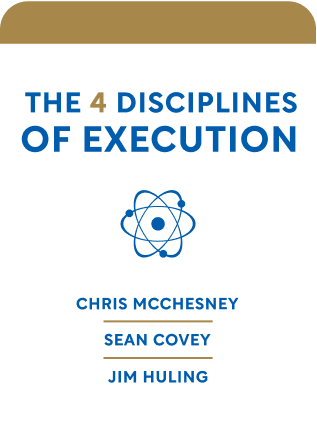

This article is an excerpt from the Shortform book guide to "The 4 Disciplines of Execution" by Chris McChesney, Sean Covey, and Jim Huling. Shortform has the world's best summaries and analyses of books you should be reading.
Like this article? Sign up for a free trial here .
What is the 4DX whirlwind theory? How might the daily whirlwind prevent you from executing on your plans?
In 4DX, the whirlwind is the distraction created by urgent, day-to-day operations. Instead of focusing on the importance of the long-term goals, you get swept up in urgency, according to the 4DX whirlwind theory.
Keep reading to better understand the 4DX whirlwind theory and what you can do about it.
The 4DX Whirlwind Theory
There are many reasons you and your company fail to effectively execute your strategies, including “the whirlwind.”
The Whirlwind
The main reason execution fails is because of the whirlwind—day-to-day operations urgently required to keep the organization running. The whirlwind takes up so much energy and focus that people don’t have energy or time left over to do new things. Urgency (the whirlwind) will beat out importance (new goals) every time. This is why most strategic goals fizzle out rather than blow up.
You’ve probably seen the effects of the whirlwind on your staff. For example, have you ever been explaining a new goal to someone and found them not really listening? While you’re talking, they’re thinking about the day-to-day tasks the conversation is taking them away from, what they might call “their actual work.” A teacher buried under essays to grade and swamped by parent-teacher conferences doesn’t have time to think about long-term goals like improving test scores.
Other Factors
Besides the 4DX whirlwind theory, there are some other more goal-specific reasons execution fails:
- People don’t know or understand the organization’s goal.
- For example, in one of the authors’ initial surveys, they discovered that only 1/7 of employees could successfully name even one of their organization’s top goals. The other 6/7 named a goal that didn’t exist. The lower the person was in the company’s hierarchy, the worse their understanding of the goal.
- Lack of passion.
- For example, in the same study, the authors learned that only 51% of people were passionate about the goal.
- Accountability.
- For example, the study found that only 19% of people were held accountable for their work on the organization’s goals.
- Lack of actionables.
- For example, the study found that 87% of people didn’t know what they were actually supposed to be doing to achieve the goal.
There are more subtle reasons too, such as lack of trust, bad compensation, bad processes, and bad decision making.

———End of Preview———
Like what you just read? Read the rest of the world's best book summary and analysis of Chris McChesney, Sean Covey, and Jim Huling's "The 4 Disciplines of Execution" at Shortform .
Here's what you'll find in our full The 4 Disciplines of Execution summary :
- The 4 disciplines that can make any strategy a successful reality
- Why a great plan falls apart when you don't think adequately about execution
- The 6 steps you need to scale the 4DX model across an entire organization






